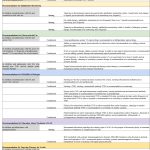Encompassing several different arthritic conditions, juvenile arthritis is one of the most common inflammatory diseases in children, affecting an estimated 300,000 boys and girls age 16 years and younger in the United States. While the causes are not completely understood, onset of juvenile arthritis can occur at any time during childhood, and it generally affects more girls than boys. Juvenile arthritis causes pain and impairs children’s mobility and growth. The disease can affect a child’s school performance and limit his or her ability to play and socialize with other children.
Research suggests the underlying mechanisms of juvenile arthritis are the result of an immune system disorder. There is also mounting evidence that suggests some patients may be genetically predisposed to the disease.
Investigators, like Sarah Ringold, MD, MS, of Seattle Children’s Hospital and the University of Washington School of Medicine in Seattle, Wash., face several challenges when conducting research on juvenile arthritis, including how to describe disease activity. However, with funding from the Rheumatology Research Foundation, Dr. Ringold and her colleagues are working to develop tools to measure and describe disease activity in juvenile arthritis patients.
“There are a number of components that go into the description of disease activity, such as the number of joints with arthritis and laboratory markers, as well as physician, patient, and parent assessments, so it can be difficult to summarize all these different aspects of the disease,” says Dr. Ringold, who has received a Scientist Development Award from the Foundation to help fund her research. “When it comes to research, the availability of new ways to describe disease activity can help us test new approaches to treating juvenile arthritis,” she adds.
For physicians treating juvenile arthritis patients, reliable descriptions and validated benchmarks of disease activity will help define best practices and determine the most appropriate and timely treatment options for their patients. Appropriate medical therapies can significantly improve outcomes for both juvenile and adult arthritis patients.
As a model for her research, Dr. Ringold looked to composite measures of disease activity used in the research, diagnosis, and treatment of adult rheumatoid arthritis (RA), which were developed in the early 1990s.
“Those measurements have been a very powerful resource for physicians and invaluable to researchers in designing and conducting clinical trials of new drugs to treat RA in adults,” she says. “The primary goal of our research was to see if we can use or adapt some of the measures utilized in adult RA to enable us to better study and treat juvenile arthritis.”
“The early results are very promising,” says Dr. Ringold, noting that her research team has identified several measurements used in adult RA that are potentially applicable to juvenile arthritis. Dr. Ringold’s team is currently collaborating with a team of researchers in Europe on additional validation of the first-ever composite measurement tool for juvenile arthritis.
“This is very exciting research with great potential to improve the way we study and treat juvenile arthritis and, ultimately, improve clinical outcomes and the quality of life for children afflicted with this disease,” says Dr. Ringold. “It is truly an honor to be involved in such important research, which would not be where it is without the Foundation’s support.”
For more information about the Foundation’s awards and grants program, including how to apply, visit www.rheumatology.org/Foundation or contact Damian Smalls, senior specialist, awards and grants, at (404) 633-3777 or [email protected].

